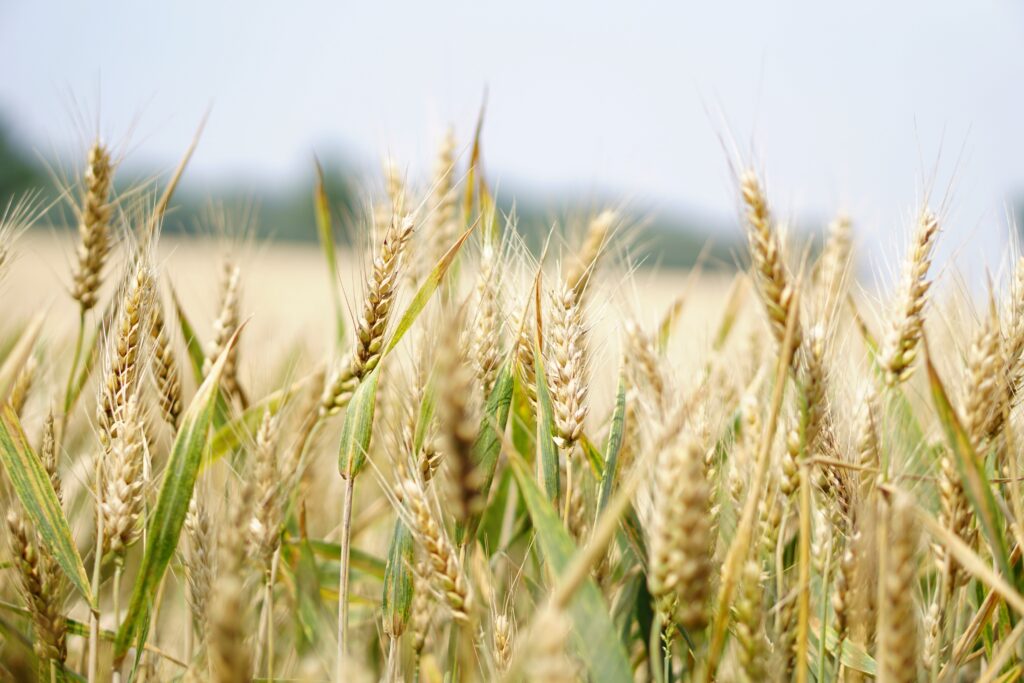Control volunteer wheat to stop the streak of yield-limiting diseases

Written by Julia Debes for Kansas Wheat
Volunteer wheat is certain to be a significant issue in the upcoming growing season, thanks to the late rains that delayed harvest progress and the high rate of abandoned fields. Hidden among the spotty stands of volunteer wheat is a safe harbor for wheat streak mosaic virus (WSMV) and other diseases to ride out the winter months. Growers should actively manage their volunteer wheat early and often to head off this threat to next year’s harvest.
“We remind Kansas wheat farmers to take necessary steps to control volunteer wheat,” said Aaron Harries, vice president of research and operations. “WSMV isn’t treatable, but it is preventable. By controlling volunteer wheat before planting begins and selecting varieties with built-in resistance, producers can help protect their future yields.”
The best way to WSMV is to control volunteer wheat early and often, according to a K-State Agronomy eUpdate from August 17. Stands of volunteer wheat provide a “green bridge” that allows the wheat curl mites that transmit WSMV to survive. This includes spots of volunteer wheat that emerge in double-cropped soybeans or cover crops as well as grassy weed species like barnyardgrass or foxtails that can serve as a disease reservoir.
After wheat harvest, Kansas producers often wait to apply herbicides with products like glyphosate or atrazine until sufficient volunteer wheat has emerged. However, another application or tillage is needed before planting to ensure the destruction of the “green bridge” created by volunteer wheat or other host plants. This is especially true during wet weather in the late summer months, which facilitates multiple flushes of volunteer wheat and other grassy weeds. K-State encourages wheat producers to terminate volunteer wheat at least two weeks prior to planting to allow enough time to kill all the wheat curl mites present in a field.
Producers also have the option to select varieties developed with built-in genetic resistance to WSMV, in most cases thanks to a gene called WSM2. K-State cautioned producers that these varieties are not a sole-source solution as they do have limitations, including missing resistance to other diseases spread by wheat curl mites — like triticum mosaic or wheat mosaic virus. The genetic resistance is also temperature sensitive, making the built-in shield less effective at hotter temperatures, especially if wheat is planted early for grazing or if high temperatures continue into October.
As an alternative, producers could also select varieties that have genetic resistance to the disease transmission agent — the wheat curl mite. The resistance to the vector means they are still susceptible to disease, but they help slow down the development of mite populations.
This genetic resistance is helpful, but their protection is more effective when used in combination with strategies to control volunteer wheat. By doing so this summer and early fall, producers can help stop the spread of WSMV and other viruses and reduce a substantial limiting factor to next year’s harvest.
“There are no chemical options such as insecticides or pesticides that are effective at controlling the wheat curl mite, so the best method to control WSMV is to control your volunteer wheat,” Harries said. “Be a good steward of your own fields and a good neighbor and help stop the streak of this yield-destroying disease.”
Learn more from K-State Agronomy on WSMV at eupdate.agronomy.ksu.edu or explore wheat variety options and other guidance on controlling volunteer wheat at kswheat.com/wheatrx.
Thanks for reading. Be sure to share and subscribe. You can also help support independent journalism in Kansas by buying me a coffee at buymeacoffee.com/kscon.
